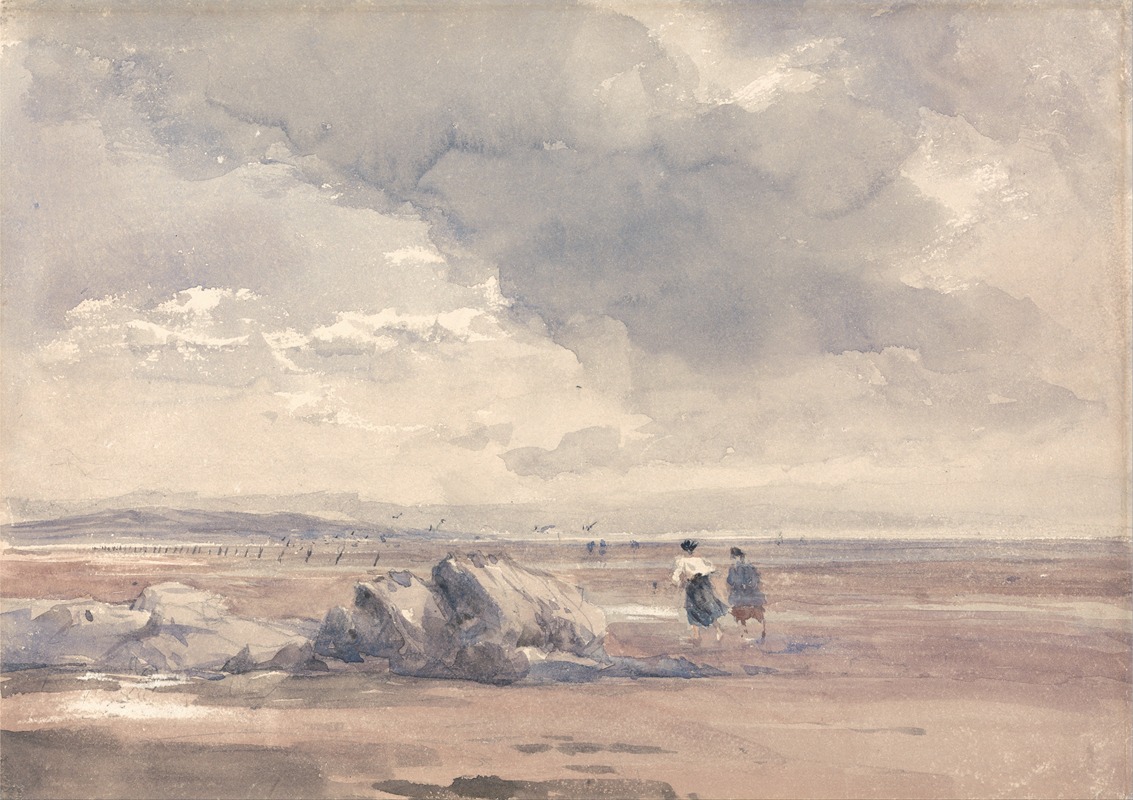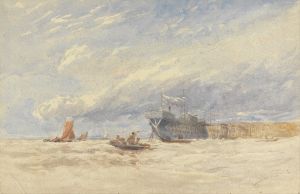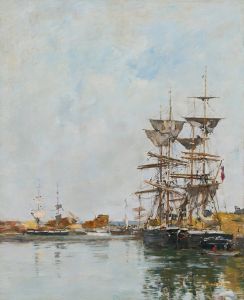
On Lancaster Sands, Low Tide
A hand-painted replica of David Cox’s masterpiece On Lancaster Sands, Low Tide, meticulously crafted by professional artists to capture the true essence of the original. Each piece is created with museum-quality canvas and rare mineral pigments, carefully painted by experienced artists with delicate brushstrokes and rich, layered colors to perfectly recreate the texture of the original artwork. Unlike machine-printed reproductions, this hand-painted version brings the painting to life, infused with the artist’s emotions and skill in every stroke. Whether for personal collection or home decoration, it instantly elevates the artistic atmosphere of any space.
David Cox's painting "On Lancaster Sands, Low Tide" is a notable work by the English landscape painter, who was an influential figure in the development of English watercolor painting during the 19th century. Born in 1783, Cox was a prominent member of the Birmingham School of landscape artists and is often associated with the Romantic movement. His works are celebrated for their atmospheric effects and masterful use of light and color.
"On Lancaster Sands, Low Tide" captures a scene on the expansive sands of Morecambe Bay, located in the northwest of England. This area is known for its vast tidal flats and treacherous quicksands, which have historically been both a natural wonder and a hazard for travelers. The painting depicts the bay at low tide, a time when the sands are exposed and the sea recedes, revealing a wide expanse of wet sand.
Cox's depiction of Lancaster Sands is characteristic of his style, which often emphasizes the transient effects of weather and light. In this painting, he skillfully captures the reflective quality of the wet sand and the subtle shifts in color across the landscape. The sky, a significant element in many of Cox's works, is rendered with a delicate touch, suggesting the movement of clouds and the play of light that is typical of the coastal environment.
The composition of "On Lancaster Sands, Low Tide" is carefully balanced, with the horizon line placed relatively low, allowing the sky to dominate the scene. This choice draws the viewer's eye upwards, emphasizing the vastness of the landscape and the ever-changing nature of the weather. The figures and animals, often included in Cox's landscapes to provide a sense of scale and human presence, are depicted with a light touch, blending harmoniously into the scene.
Cox's technique in this painting reflects his mastery of watercolor, a medium in which he excelled. He employed a variety of washes and brushstrokes to create texture and depth, capturing the essence of the landscape with a seemingly effortless fluidity. His ability to convey the mood and atmosphere of a scene with minimal detail is one of the hallmarks of his work.
"On Lancaster Sands, Low Tide" is an example of Cox's interest in capturing the natural beauty of the British landscape, a theme that runs throughout his oeuvre. His work has been influential in the development of landscape painting, particularly in the use of watercolor, and continues to be appreciated for its artistic and historical significance.
Today, David Cox's paintings, including "On Lancaster Sands, Low Tide," are held in various public and private collections, where they are studied and admired for their contribution to the tradition of English landscape painting. Cox's legacy as a pioneering watercolorist and his ability to capture the ephemeral qualities of nature ensure his place as a significant figure in the history of art.


















